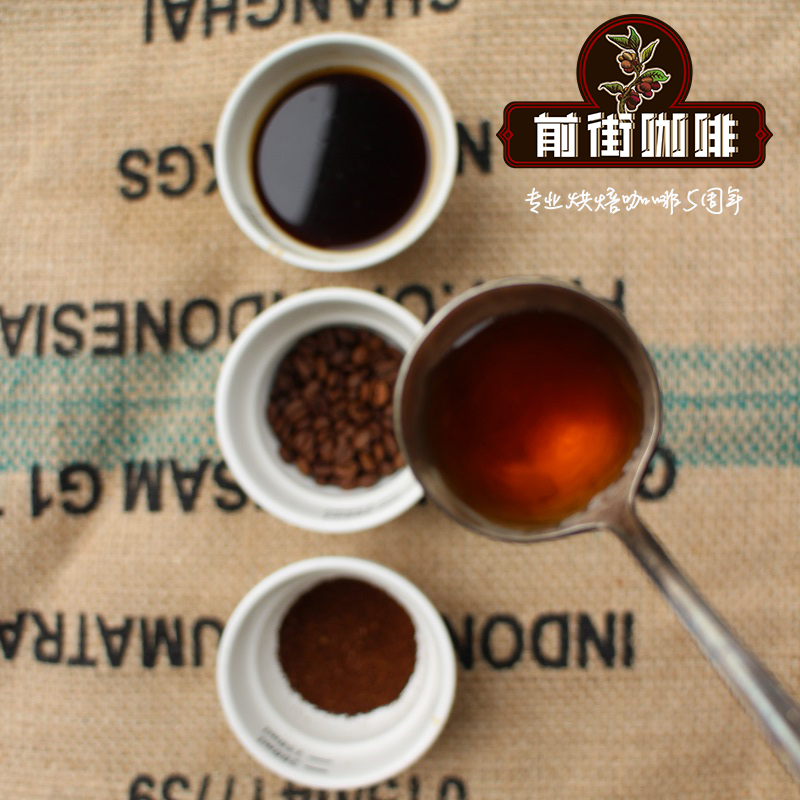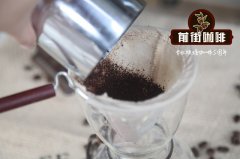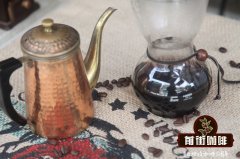Arabica Coffee Bean and Robusta Coffee Bean Origin Introduction Arabica Coffee Bean Features

Professional coffee knowledge exchange more coffee bean information please follow the coffee workshop (Wechat official account cafe_style)
Arabica coffee beans are fine coffee pebbles.
Do you remember the division of boundaries, phylums, classes, orders, families, genera and species in bioscience? Don't say you gave it back to the junior high school biology teacher. A few years ago, the coffee industry in Taiwan began to emphasize Arabica coffee beans. In fact, what is being discussed and pursued in the boutique coffee industry is Arabica coffee, so I will not repeat it here. There are hundreds of coffee trees that belong to Arabica. We are generally familiar with coffee, such as Mantenin in Indonesia, Blue Mountain in Jamaica, Kona in Hawaii, and so on. Some are from the country of origin, some are varieties of coffee beans (* Note: please refer to [Overview of Fine (Top) Coffee]); in the final analysis... What on earth is Arabica?
Coffee is found.
There was a shepherd in Ethiopia in the 16th century. One day he found his sheep jumping up and down there, and he thought it was amazing. After careful observation, we realized that it was because the sheep had eaten a kind of red fruit.
Coffee is found.
Under the publicity of the shepherd boy, more and more people learned about the refreshing effect of the fruit, and all felt refreshed after eating it. Later, the fruit became a refreshing drug used in long religious rituals. It is coffee.
What are the varieties of coffee sold on the market?
Coffee belongs to the Rubiaceae. As for varieties, there are mainly two kinds in circulation on the market.
Arabica (Arabica): high cost, good quality and mellow taste, growing at high altitudes, including Nicaragua, Costa Rica, Panama and other Latin American countries specializing in this variety of coffee.
Robusta (Chinese translation: Robusta): grows in low altitude and hot areas. Low-cost brands usually use this coffee bean in whole or in part.
The two varieties of Arabica coffee beans & Robusta carve up almost 100% of the market.
Coffee varieties in circulation in the market
Robusta's "advantages and disadvantages" and "Circulation Mode"
Advantages
Adapt to "low altitude" planting environment, short ripening time and high yield; resistant to leaf rust
The price is cheap, and the coffee liquid extracted is thicker and thicker.
Shortcoming
It smells like rubber (tires) and mildew. Lack of acid and aroma ingredients (so it is not included in the discussion of boutique coffee)
Caffeine accounts for about twice as much coffee bean as Arabica.
Main "circulation / drinking" mode
Instant coffee
Mixed beans / mixed beans: French / Italian mixed coffee (reduce cost)
Espresso, brewed in mocha pot (increases consistency and is less likely to drink miscellaneous and smelly)
The truth.
Most people think that the main reason for the high caffeine in espresso is not the way it is brewed, but the fact that most of the mixed coffee used in espresso brewing is mixed with a certain proportion of robusta (about 50% in French and 30-40% in Italian; not necessarily, depending on the roaster's personal style)
In recent years, in places where coffee civilization is more advanced, such as the United States, Japan, Europe, and so on, people have begun to promote the use of single Arabica or Arabica synthetic beans. Taiwan, China and other places have not seen such an attempt.
After baking into the second explosion (medium-deep baking-deep baking-re-baking), Robusta (or inferior Arabica) can cover up the bad miscellaneous and smelly smell by caramelization reaction and bean carbonization.
Almost all of the seasoned coffee sold in the market, such as Latte, Macchiato, Mocha, Cappuccino and so on, are seasoned on the basis of espresso. Use deep and re-roasted beans (until now, most of the products of well-known coffee chains or franchisees are mainly deep-roasted beans) in order to retain the coffee flavor.
Arabica coffee beans "advantages and disadvantages" and "circulation mode"
Advantages
Arabica coffee produced by good cultivation and proper management of the environment has different acid and aroma components. Numerous coffee gluttons compete for cup testing and evaluation.
A good Arabica has a complete flavor and a balance of sour, sweet and salty taste.
Arabica caffeine content is low, about half less caffeine than Robusta under the same conditions (* Arabica caffeine content varies with different varieties and places of origin, but generally lower than Robusta species)
Shortcoming
Stringent requirements for planting environment, long ripening time, low unit yield; not resistant to leaf rust
Because of the unfavorable factors in planting and harvest, the price of good Arabica coffee is much higher than that of Robusta.
Main "circulation / drinking" mode
Single product / raw bean / whole bean (Whole Bean) for sale
French / Italian mixed coffee will be flavored with Arabica beans (sour, sweet)
Hand brewing, siphon, French filter pot and American coffee machine can all brew delicious Arabica coffee (the key lies in grinding thickness, water temperature, extraction time, etc., see the secret of home brewing coffee)
The truth.
In addition to the producing conditions of good Arabica coffee raw beans (volcanic soil, high altitude, temperature difference between day and night, rainfall, etc.), we should pay more attention to the fineness of the process of harvesting (manual picking, picking only ripe fruit), treatment (peeling, fermenting and removing pulp).
The cultivated land of a large manor is often thousands of mu. Therefore, it is also necessary to test and evaluate the quality of coffee in different blocks (hills) every year. Finally, the assembly line must be arranged to pick out the defective beans manually in order to really ensure the quality of raw beans in the consuming country.
The shelf life of coffee is very short. For more information, please see the overview of boutique (top) coffee. In general, what can be seen in the store is to pour the deep-baked beans directly into an open plastic container on a bean grinder or coffee maker. So, in fact, there is no way to tell which cup of coffee delivered to the hand is how long the coffee beans have been brewed?
The annual demand of chain cafes is huge, and it is an impossible task to spend a lot of money on high-grade Arabica raw beans under the premise of business (we must ensure shareholders' profits).
Independent cafes or self-baked cafes have sprung up in recent years, so be careful to choose those who really know and care about the quality of coffee to enjoy high-quality Arabica coffee.
In short, you have to be careful when drinking coffee out. So as not to spend money, but drink shoddy coffee. In addition to being a fat and unscrupulous businessman, he has to lose the health of himself and his family.
Subclassification of Arabica Coffee Bean varieties
Coffee variety
In the world of "boutique coffee", Arabica varieties are only classified and discussed. The more representative varieties are:
Ancient native species: Typica (Tibica), Bourbon (bourbon)
Well-known Typica variants: Maragogype (Giant Elephant Bean), Geisha (nicknamed geisha bean … Because of the homonym with [geisha], etc.
Well-known Bourbon variants: Caturra (Kaddura), Pacas (Pacas), etc.
Well-known mixed race: Pacamara (Pacas + Giant Elephant Bean = Pacamara)
Arabica Coffee-subcategory (click to enlarge)
Main producing areas
Major continental types (sorted by annual output): central America (such as Nicaragua), South America, Asia, eastern Africa, etc.
Well-known island type: Jamaica, Hawaii, Sumatra, Indonesia, Papua New Guinea and so on.
Comparison of fruits / leaves of different varieties
The left is "Kaddura" and the right is "giant elephant beans". Is there a big difference in appearance?
Boutique coffee _ giant elephant beans
[the amazing size of giant elephant beans] is it much bigger than the usual coffee beans?
The choice of the merchant
[direct relationship] can purchase raw beans directly from the manor of the producing area, and monitor the cup quality test and the whole shipping process
Use [vacuum preservation] imported [high quality raw beans]
[bake only after placing an order] to ensure that the coffee received is fresh
Provide a bag that can be effectively preserved [with an one-way breather valve device]
[baking date] will be marked on the bag.
Advice to [coffee lovers]
Choose excellent merchants that can provide freshly roasted coffee beans.
Store coffee in an effective way and drink it in the best taste period.
Try and appreciate the taste of good coffee from deep (roasting) to shallow (roasting)
Important Notice :
前街咖啡 FrontStreet Coffee has moved to new addredd:
FrontStreet Coffee Address: 315,Donghua East Road,GuangZhou
Tel:020 38364473
- Prev

Coffee, coffee cold knowledge introduction
Coffee is one of the most popular drinks in the world, although it is very popular, but many people do not know it very well. Here are the 19 secrets behind coffee, and you'll know where it comes from, how much water it takes to grow a pound of coffee, and how much water it takes.
- Next

Arabica coffee beans are great? What brand of coffee beans is good for producing Arabica coffee beans?
Professional coffee knowledge exchange more coffee bean information Please pay attention to the coffee workshop (Wechat official account cafe_style) often see breakfast shops or coffee shops, publicity stressed that their own coffee is 100% Arabica coffee beans, but isn't that the right thing to do? Coffee beans are generally divided into Arabica and Robusta. 80% of the world's coffee beans are
Related
- Beginners will see the "Coffee pull flower" guide!
- What is the difference between ice blog purified milk and ordinary milk coffee?
- Why is the Philippines the largest producer of crops in Liberia?
- For coffee extraction, should the fine powder be retained?
- How does extracted espresso fill pressed powder? How much strength does it take to press the powder?
- How to make jasmine cold extract coffee? Is the jasmine + latte good?
- Will this little toy really make the coffee taste better? How does Lily Drip affect coffee extraction?
- Will the action of slapping the filter cup also affect coffee extraction?
- What's the difference between powder-to-water ratio and powder-to-liquid ratio?
- What is the Ethiopian local species? What does it have to do with Heirloom native species?

